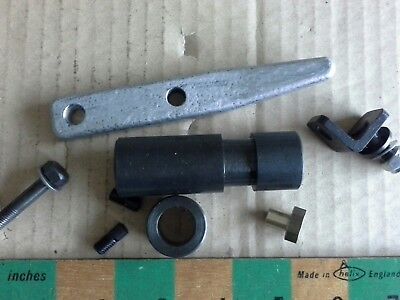Thanks Clive. That will make life easier. I had concerns about the bush moving and the dog slots no longer lining up etc. KISS principle sounds good to me. Steel-on-steel should be ok under such low stress, low rev usage.
I am making mine to fit my ML7 so no factory groove in the leadscrew. I will work out the cut position from the illustration in the ML10 manual I have. I have a graduated handwheel in place already. That is what has prompted me to make the matching dog clutch instead of removing the change gears every time I want to use the handwheel. It is something I got very used to on my old Drummond M-Type and wouldn't be without out it if I have a choice.
It is particularly handy for milling with the vertical slide where I use the leadscrew handwheel for X axis movement and measurement. Also for general turning for roughing feed but also so I can leave the topslide canted at 14 degrees so it clears the tailstock and provides 1 thou of infeed for every 4 thou of movement on the topslide dial. Then just use the main leadscrew handwheel for measuring and turning up to shoulders etc.
I will probably go one step further than the ML10 though, due to the ML7's longer leadscrew, and put a support bracket with bronze bushing on the leadscrew directly to the right of the dog clutch, just to take the weight of the leadscrew off the dog clutch. May be overkill but I don't think it will hurt to have the leadscrew firmly supported. The Drummond has a casting supporting the OD of the dog clutch to achieve the same thing, but no room for it on the ML7 so the extra bracket will do the same thing.
It will be a couple of weeks before I can get back out in the workshop as I am convalescing from minor foot surgery but will report back on how it goes when I get there.
Edited By Hopper on 13/06/2022 02:02:20
Hopper.





